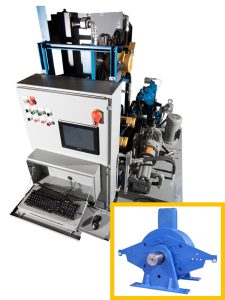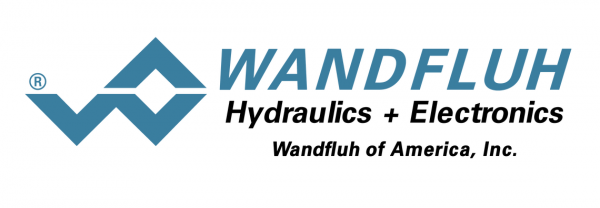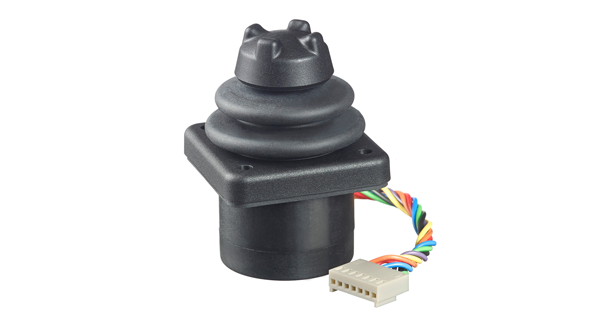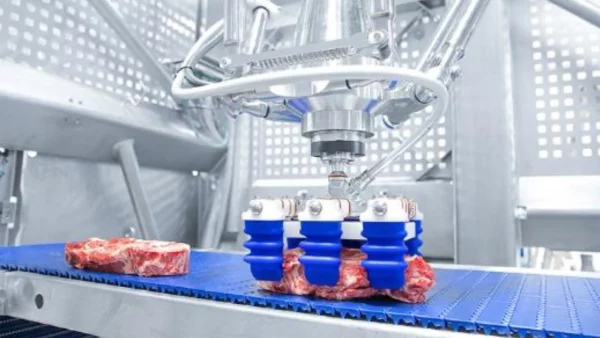Force Control Dynamometers Capture Data at Critical Junctures
 From Force Control Industries.
From Force Control Industries.
Force Control Industries dynamometers featuring Positorq oil shear load brakes absorb extreme torque at low speed, down to zero rpm. This allows them to accurately capture data at these critical junctures, when dynos equipped with traditional load brakes cannot. Oil shear technology can provide instant load spikes and static lockup up to three times the continuous load rating. High cycle counts (up to 300 torque changes per minute) allow for tests with a hammering effect on the tested subject.
Quick, controllable response allows virtually unlimited test capabilities, while their extremely quiet operation allows gearbox, transmission, or final drive noise testing. High-torque, low-speed testing is commonly used for testing life cycles, shock loading, overall machine life and performance for snowmobiles, forklifts, 2-wheel/4-wheel/6-wheel drive tractors or tracked vehicles, commercial truck axles, helicopter transmissions, gun turrets, winches, hoists, hydraulic motors, and more. Proven oil shear technology eliminates wear for service-free endurance testing and requires no adjustment or friction material dust cleanup.
Force Control can furnish a complete test stand, including frame fabrication, controls, data acquisition, and support. This can be a benefit to many companies that often build in-house testing facilities but lack time to design and support the complete system. Force Control also works with test engineers who are makers of their own design and prefer to handle certain aspects or components of a system in-house.
A variety of sizes and arrangements are offered for thru-shaft mounting, flange mounting, and shaft coupled foot mounting, as well as vertical, horizontal, or incline mounting orientations. Load brakes can be supplied with a torque arm and load cell; cooling, filtration, and actuation systems; and data acquisition software, as well as control valves, structures, and other ancillary components.
How oil shear technology works
Oil shear technology provides a film of transmission fluid between alternating friction discs and drive plates of a mechanical, multidisc friction brake. As the discs and plates are brought together, squeezing the fluid film, it initiates hydroviscous shear. This phenomenon transmits torque through the fluid through laminar flow.
This phenomenon is based on the laminar flow of the fluid film between the friction discs and drive plates. The fluid tends to flow in layers, with each layer moving at consistently different speeds between the rotating friction disc and the static drive plate. As the pressure squeezing the disc and plate together increases, the hydroviscous force of the molecules sliding past each other increases, providing torque. In other words, torque output is directly proportional to the pressure applied to the friction stack.
Actuation pressure can be provided by a proportional regulator for pneumatically or hydraulically actuated units, or by a servo valve in hydraulically actuated units requiring more accurate response.
With the fluid layer between the friction disc and drive plate, there is no tendency to stick slip or chatter at very low differential speed, providing a smooth transfer of torque down to zero rpm.
The second part of the equation is heat energy, which must be dissipated from the system. Using oil shear technology, the fluid circulates through the friction stack and cycles out of the brake, to a forced lube cooling and filtration system. The cooled fluid lubricates the brake components, including the friction material, eliminating the typical degradation found in dry friction brakes. This also allows for a more compact load brake that can, in many cases, be directly mounted to the output of a test device.
The supplied cooling and filtration systems typically include pumps, motors, heat exchangers, filters, temperature switches, flow switches, a fluid-level sight gauge, optional tank heaters, and optional hydraulic actuation pumps and motors.
The cooling system can be designed for a single load brake or several, and it is dependent on the horsepower applied to the overall system. Many cooling systems are designed for multiple load brakes, such as four-wheel vehicles, which use four brakes. The hydraulic actuation system can be built into the cooling unit using the same fluid.
Force Control Positorq load brakes utilizing oil shear technology are available in a variety of sizes and can absorb up to 3,000 thermal horsepower (2,237 Kw). Mountings vary and include flange mounts, foot mounts, and shaft mounts. Custom designs and load carrying capacity are commonly developed for specific applications.
For more information, e-mail sales@forcecontrol.com, call (513) 868-0900, or visit www.forcecontrol.com/.







